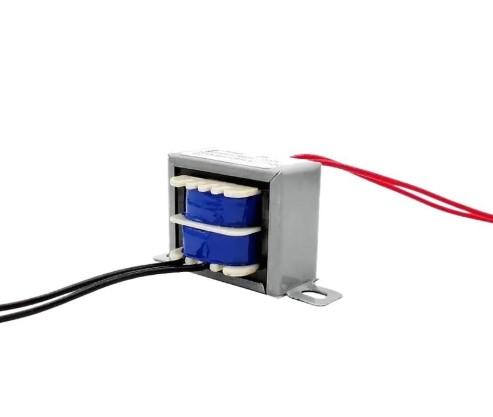Silicone Rubber Market Poised for Significant Growth: Research Intelo Analysis
The Silicone Rubber Market is witnessing robust expansion due to the growing demand across automotive, healthcare, and electronics sectors. Silicone rubber, prized for its thermal stability, elasticity, and chemical resistance, is increasingly preferred for applications requiring durability and performance. Research Intelo’s latest study highlights key growth drivers, market restraints, and opportunities shaping the global landscape.
Globally, the silicone rubber market is projected to experience substantial growth, driven by increasing industrial applications and rising consumer demand for high-performance materials. Enhanced awareness regarding environmental sustainability has also bolstered the adoption of silicone-based products, as these materials are more eco-friendly compared to conventional rubber.
North America and Asia-Pacific dominate the market, contributing significant revenue shares. Technological advancements in production processes and a surge in medical and electronic applications are expected to further fuel market expansion.
Request a Sample Report: https://researchintelo.com/request-sample/651
Market Drivers
-
Automotive Industry Growth: The automotive sector’s increasing use of silicone rubber for gaskets, seals, and insulation components is a primary market driver. Rising demand for electric vehicles (EVs) further strengthens the adoption of silicone materials.
-
Medical Applications: Silicone rubber’s biocompatibility and resistance to sterilization make it ideal for medical tubing, implants, and wearable devices.
-
Electronics and Electrical Applications: As consumer electronics proliferate, silicone rubber’s electrical insulation properties support its use in cables, connectors, and components.
The growing emphasis on lightweight and high-durability materials across industries is expected to increase demand further. Companies are also investing in R&D to develop silicone variants with improved thermal, mechanical, and chemical properties.
View Full Report: https://researchintelo.com/report/silicone-rubber-market
Market Restraints
Despite strong growth, certain challenges could hinder expansion. The high cost of silicone rubber compared to natural and synthetic rubbers remains a notable restraint. Price fluctuations in raw materials and energy-intensive manufacturing processes may also affect market stability.
-
Limited Raw Material Availability: Silica, a key raw material, faces supply-chain constraints in certain regions, impacting production.
-
Substitute Products: Competition from alternative elastomers, such as thermoplastic elastomers (TPEs), may restrict growth in cost-sensitive applications.
Addressing these challenges requires innovation in production efficiency, cost management, and material recycling, which presents an opportunity for manufacturers to gain a competitive edge.
Enquire Before Buying: https://researchintelo.com/request-for-customization/651
Opportunities in the Silicone Rubber Market
The market offers lucrative opportunities due to technological innovations and new application areas. Growing adoption in renewable energy systems, such as solar panels, positions silicone rubber as a key material for sustainability-driven industries.
-
3D Printing and Advanced Manufacturing: Silicone rubber’s adaptability enables its use in emerging manufacturing techniques, including 3D printing, allowing customized designs and complex geometries.
-
Expansion in Healthcare: Increasing investments in medical devices and wearable health technologies create demand for silicone rubber products that meet stringent safety and performance standards.
-
Electrification Trends: The shift toward electric and hybrid vehicles opens avenues for silicone insulation components and thermal management solutions.
As the industrial and consumer applications broaden, stakeholders are focusing on eco-friendly production and recycling initiatives to align with environmental regulations and reduce carbon footprints.
Check Out the Report: https://researchintelo.com/checkout/651
Market Dynamics
The silicone rubber market exhibits dynamic trends driven by innovation, regulatory frameworks, and evolving consumer needs.
-
Regional Insights: Asia-Pacific leads the market, accounting for the largest share due to rapid industrialization, growing automotive production, and increasing electronics manufacturing. Europe follows, driven by stringent environmental regulations promoting eco-friendly silicone variants.
-
Price Trends: Despite high costs, the value proposition of silicone rubber in durability and performance ensures sustained adoption across premium applications.
-
Production Innovations: Manufacturers are integrating automation, continuous mixing techniques, and advanced compounding technologies to optimize quality and efficiency.
Silicone rubber’s resistance to extreme temperatures, UV light, and chemical degradation ensures stable performance in diverse environments, making it an attractive choice for high-performance industries.
Global Market Statistics
-
The global silicone rubber market is expected to reach USD 15.2 billion by 2030, growing at a CAGR of 6.3% from 2024 to 2030.
-
Asia-Pacific contributes over 40% of the global market share, with China, Japan, and India leading production and consumption.
-
Automotive and electronics segments collectively account for more than 50% of the total market demand.
These figures underscore the potential for investors, manufacturers, and end-users to leverage growth opportunities and optimize product portfolios.
Segmentation Insights
The market is segmented based on type, application, and region:
-
By Type: Liquid Silicone Rubber (LSR) and High Consistency Rubber (HCR) dominate, catering to different industrial needs. LSR is preferred for precision applications, while HCR suits conventional molding and extrusion processes.
-
By Application: Automotive, healthcare, electronics, construction, and consumer goods represent key end-use sectors, with automotive and healthcare showing the fastest growth.
-
By Region: North America, Europe, Asia-Pacific, and Rest of the World (RoW) each display unique growth drivers, influenced by local industrial development and regulatory policies.
Future Outlook
The silicone rubber market is poised for consistent growth, driven by innovation, expanding applications, and sustainable initiatives. Manufacturers focusing on research, eco-friendly production, and cost-effective solutions are likely to gain a competitive advantage.
-
Technological advancements will enhance material performance and open avenues in electric vehicles, renewable energy, and high-precision electronics.
-
Strategic collaborations and regional expansion will ensure market resilience against supply-chain challenges and price volatility.
The market’s evolving landscape offers an attractive proposition for stakeholders seeking long-term growth and value creation in high-performance elastomers.
Request a Sample Report: https://researchintelo.com/request-sample/651
Conclusion
The Silicone Rubber Market demonstrates significant potential due to its versatility, durability, and alignment with sustainability trends. With applications spanning automotive, healthcare, electronics, and construction, the market is expected to maintain steady growth in the coming years. Understanding market drivers, restraints, and emerging opportunities will be key for strategic decision-making and investment planning.






